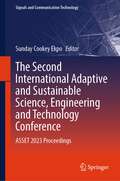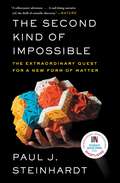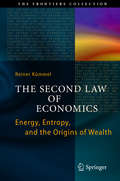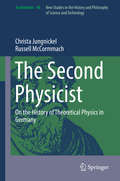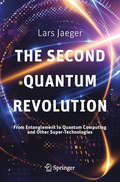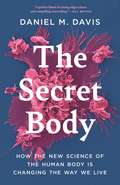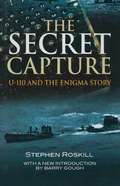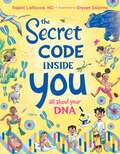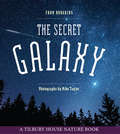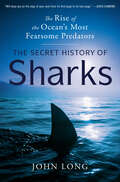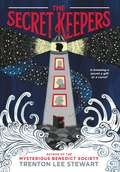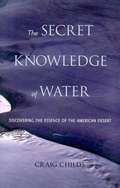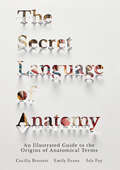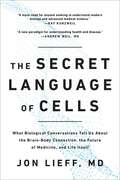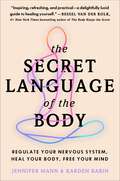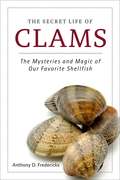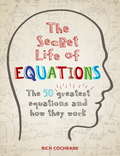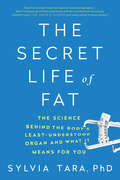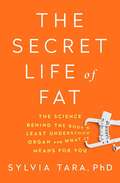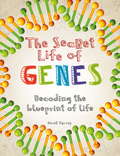- Table View
- List View
The Second International Adaptive and Sustainable Science, Engineering and Technology Conference: ASSET 2023 Proceedings (Signals and Communication Technology)
by Sunday Cookey EkpoThis proceedings presents papers from the Second International Adaptive and Sustainable Science, Engineering and Technology Conference (ASSET 2023), which took place simultaneously in Manchester, UK and Ikot Akpaden, Nigeria on 18-20, July 2023. The ASSET conference serves as an interactive forum for the advancement of the practice of adaptive and sustainable systems across the multiple disciplines and specialty areas involved with the science, engineering, and technology of integrated entities, complex systems, and networks. The conference provides an avenue for practitioners, researchers, managers, developers, analysts, educators, and users to exchange innovative ideas, concepts, applications, and lessons learned in addressing domain-specific problems, applications-oriented topics, methodologies, standards and multidisciplinary research opportunities and findings relating to ASSET systems.
The Second Kind of Impossible: The Extraordinary Quest for a New Form of Matter
by Paul SteinhardtOne of the most fascinating scientific detective stories of the last fifty years, an exciting quest for a new form of matter. The Second Kind of Impossible reads like James Gleick’s Chaos combined with an Indiana Jones adventure.When leading Princeton physicist Paul Steinhardt began working in the 1980s, scientists thought they knew all the conceivable forms of matter. The Second Kind of Impossible is the story of Steinhardt’s thirty-five-year-long quest to challenge conventional wisdom. It begins with a curious geometric pattern that inspires two theoretical physicists to propose a radically new type of matter—one that raises the possibility of new materials with never before seen properties, but that violates laws set in stone for centuries. Steinhardt dubs this new form of matter “quasicrystal.” The rest of the scientific community calls it simply impossible. The Second Kind of Impossible captures Steinhardt’s scientific odyssey as it unfolds over decades, first to prove viability, and then to pursue his wildest conjecture—that nature made quasicrystals long before humans discovered them. Along the way, his team encounters clandestine collectors, corrupt scientists, secret diaries, international smugglers, and KGB agents. Their quest culminates in a daring expedition to a distant corner of the Earth, in pursuit of tiny fragments of a meteorite forged at the birth of the solar system. Steinhardt’s discoveries chart a new direction in science. They not only change our ideas about patterns and matter, but also reveal new truths about the processes that shaped our solar system. The underlying science is important, simple, and beautiful—and Steinhardt’s firsthand account is an engaging scientific thriller.
The Second Law of Economics
by Reiner KümmelNothing happens in the world without energy conversion and entropy production. These fundamental natural laws are familiar to most of us when applied to the evolution of stars, biological processes, or the working of an internal combustion engine, but what about industrial economies and wealth production, or their constant companion, pollution? Does economics conform to the First and the Second Law of Thermodynamics? In this important book, Reiner Kümmel takes us on a fascinating tour of these laws and their influence on natural, technological, and social evolution. Analyzing economic growth in Germany, Japan, and the United States in light of technological constraints on capital, labor, and energy, Professor Kümmel upends conventional economic wisdom by showing that the productive power of energy far outweighs its small share of costs, while for labor just the opposite is true. Wealth creation by energy conversion is accompanied and limited by polluting emissions that are coupled to entropy production. These facts constitute the Second Law of Economics. They take on unprecedented importance in a world that is facing peak oil, debt-driven economic turmoil, and threats from pollution and climate change. They complement the First Law of Economics: Wealth is allocated on markets, and the legal framework determines the outcome. By applying the First and Second Law we understand the true origins of wealth production, the issues that imperil the goal of sustainable development, and the technological options that are compatible both with this goal and with natural laws. The critical role of energy and entropy in the productive sectors of the economy must be realized if we are to create a road map that avoids a Dark Age of shrinking natural resources, environmental degradation, and increasing social tensions.
The Second Physicist
by Russell Mccormmach Christa JungnickelThis book explores the rise of theoretical physics in 19th century Germany. The authors show how the junior second physicist in German universities over time became the theoretical physicist, of equal standing to the experimental physicist. Gustav Kirchhoff, Hermann von Helmholtz, and Max Planck are among the great German theoretical physicists whose work and career are examined in this book. Physics was then the only natural science in which theoretical work developed into a major teaching and research specialty in its own right. Readers will discover how German physicists arrived at a well-defined field of theoretical physics with well understood and generally accepted goals and needs. The authors explain the nature of the work of theoretical physics with many examples, taking care always to locate the research within the workplace. The book is a revised and shortened version of Intellectual Mastery of Nature: Theoretical Physics from Ohm to Einstein, a two-volume work by the same authors. This new edition represents a reformulation of the larger work. It retains what is most important in the original work, while including new material, sharpening discussions, and making the research more accessible to readers. It presents a thorough examination of a seminal era in physics.
The Second Quantum Revolution: From Entanglement to Quantum Computing and Other Super-Technologies
by Lars JaegerThis book tells the story of the second quantum revolution which will shape the 21st century as much as the first quantum revolution shaped the 20th century. It provides unique orientation in today's discussion and the latest progress on the interpretation of quantum physics and its further technological potential. As you read this book the first prototypes of this revolution are being built in laboratories worldwide. Super-technologies such as nanotechnology, quantum computers, quantum information processing, and others will soon shape our daily lives, even if physicists themselves continue to disagree on how to interpret the central theory of modern physics. The book will thus also touch on the profound philosophical questions at the heart of quantum mechanics.
The Secret Body: How the New Science of the Human Body Is Changing the Way We Live
by Daniel M. Davis“A perfect blend of cutting-edge science and compelling storytelling.”—Bill BrysonA revolutionary new vision of human biology and the scientific breakthroughs that will transform our livesImagine knowing years in advance whether you are likely to get cancer or having a personalized understanding of your individual genes, organs, and cells. Imagine being able to monitor your body's well-being, or have a diet tailored to your microbiome. The Secret Body reveals how these and other stunning breakthroughs and technologies are transforming our understanding of how the human body works, what it is capable of, how to protect it from disease, and how we might manipulate it in the future.Taking readers to the cutting edge of research, Daniel Davis shows how radical new possibilities are becoming realities thanks to the visionary efforts of scientists who are revealing the invisible and secret universe within each of us. Focusing on six important frontiers, Davis describes what we are learning about cells, the development of the fetus, the body's immune system, the brain, the microbiome, and the genome—areas of human biology that are usually understood in isolation. Bringing them together here for the first time, Davis offers a new vision of the human body as a biological wonder of dizzying complexity and possibility.Written by an award-winning scientist at the forefront of this adventure, The Secret Body is a gripping drama of discovery and a landmark account of the dawning revolution in human health.
The Secret Capture: U-110 and the Enigma Story
by Stephen RoskillFor fifteen years after the end of the war all official Admiralty records showed the German submarine U 110 as sunk on 9 May 1941 by the surface escorts of convoy OB.318. As this book was the first to reveal, this was a deliberate deception, as the U-boat was actually captured and its contents fully investigated before being allowed to sink a day later, a fact skilfully kept from even the survivors of the submarines crew. As the official historian of the naval war, Roskill had followed the party line when writing his authorised account, but provoked by exaggerated claims concerning a US Navy capture of a U-boat in 1944, Roskill decided to set the record straight. His narrative is prefaced by brief coverage of previous submarine captures by the Royal Navy three Italian and one German before covering the U 110 operation in great detail, underlining the skill and bravery of those involved.We now know that the reason for the secrecy was that the U-boat gave up valuable codebooks, charts, ciphers and, most significantly, a complete and undamaged Enigma machine. At the time of the books first publication, Ultra was still a secret, so Roskill (who clearly knew about it) had to be discreet about the exact details of what was taken from the submarine while insisting on its crucial value to the war effort. However, a new introduction puts the capture into context, making clear its vital importance in the history of allied codebreaking in World War Two.
The Secret Code Inside You: All About Your DNA
by Rajani LaRocca"Dynamic and eye-catching illustrations. . . . A solid introduction to a complex topic." -Kirkus Reviews"This whimsical approach to explaining the concept of DNA, cells, and chromosomes manages to make a complex topic accessible to preschoolers." -School Library JournalLearn about the secret code that is DNA in this vibrant and informative picture book!There's a secret code inside you, a code called DNA.A code that tells your body's cells what they should do each day. It looks like twisted ladders, or tiny, twirling noodles.It makes us into people, instead of into poodles.Why can't humans breathe underwater? Why are some people tall and others short? Why do we resemble our parents and grandparents? This book explores all this and more in flowing, rhyming text, explaining cells, DNA, and genetics in a way that is simple and easy for children to understand. Colorful and brilliantly illustrated, The Secret Code Inside You illustrates that while DNA may be the blueprint for how a person looks, what you choose to do with your body is entirely up to you!
The Secret Galaxy (Tilbury House Nature Book #0)
by Fran Hodgkins Mike TaylorInspired by Tilbury House s award-winning, Kirkus-starred book The Secret Pool (2013)A lyrical narrative voice (the voice of the Milky Way galaxy itself) is augmented by sidebars filled with amazing facts and insights about our galaxy, and by extension, our universe. Features Mike Taylor's extraordinary night sky photography and breathtaking NASA images of the births and deaths of stars and galaxies. Combines a read-aloud bedtime story with accessible, scientifically accurate sidebar features. The perfect book for a budding stargazer or astronomer. The Tilbury House Nature Book series brings the natural world to life for young readers. Each book aims for the highest standards of scientific accuracy and storytelling magic.
The Secret History of Sharks: The Rise of the Ocean's Most Fearsome Predators
by John LongFrom ancient megalodons to fearsome Great Whites, this book tells the complete, untold story of how sharks emerged as Earth&’s ultimate survivors, by world-leading paleontologist John Long.&“Will keep you on the edge of your seat from its first page to its last page.&”—Jared Diamond, Pulitzer Prize–winning author of Guns, Germs, and SteelSharks have been fighting for their lives for 500 million years and today are under dire threat. They are the longest-surviving vertebrate on Earth, outlasting multiple mass extinction events that decimated life on the planet. But how did they thrive for so long? By developing superpower-like abilities that allowed them to ascend to the top of the oceanic food chain. John Long, who for decades has been on the cutting edge of shark research, weaves a thrilling story of sharks&’ unparalleled reign. The Secret History of Sharks showcases the global search to discover sharks&’ largely unknown evolution, led by Long and dozens of other extraordinary scientists. They embark on digs to all seven continents, investigating layers of rock and using cutting-edge technology to reveal never-before-found fossils and the clues to sharks&’ singular story. As the tale unfolds, Long introduces an enormous range of astonishing organisms: a thirty-foot-long shark with a deadly saw blade of jagged teeth protruding from its lower jaws, a monster giant clams crusher, and bizarre sharks fossilized while in their mating ritual. The book also includes startling new facts about the mighty megalodon, with its sixty-six-foot-long body, massive jaws, and six-inch serrated teeth. With insights into the threats to sharks today, how they contribute to medical advances, and the lessons they can teach us about our own survival, The Secret History of Sharks is a riveting look at scientific discovery with ramifications far beyond the ocean.
The Secret History of Sharks: The Rise of the Ocean's Most Fearsome Predators
by John Long'Will keep you on the edge of your seat from its first page to its last page' -Jared Diamond, Pulitzer Prize-winning author of Guns, Germs, and SteelFrom ancient megalodons to fearsome Great Whites, this book tells the complete, untold story of how sharks emerged as Earth's ultimate survivors, by world-leading paleontologist John Long.Sharks have been fighting for their lives for 500 million years and today are under dire threat. They are the longest-surviving vertebrate on Earth, outlasting multiple mass extinction events that decimated life on the planet. But how did they thrive for so long? By developing superpower-like abilities that allowed them to ascend to the top of the oceanic food chain. John Long, who for decades has been on the cutting edge of shark research, weaves a thrilling story of sharks' unparalleled reign. The Secret History of Sharks showcases the global search to discover sharks' largely unknown evolution, led by Long and dozens of other extraordinary scientists. As the tale unfolds, Long introduces an enormous range of astonishing organisms: a thirty-foot-long shark with a deadly saw blade of jagged teeth protruding from its lower jaws and bizarre sharks fossilized while in their mating ritual. With insights into the threats to sharks today, how they contribute to medical advances, and the lessons they can teach us about our own survival, The Secret History of Sharks is a riveting look at scientific discovery with ramifications far beyond the ocean.'This book is the work of a master scientist and storyteller. It will make you see sharks in a new way: not as blood-thirsty monsters that we should fear, but as nature's ultimate survivors' - Steve Brusatte, New York Times bestselling author of The Rise and Fall of the Dinosaurs'Readers will want to sink their teeth into this' - Publishers Weekly'Thoroughly researched and wonderfully narrated, The Secret History of Sharks makes a convincing case that the story of sharks is nothing less than the story of life on Earth. Highly recommended!' - Nate Blakeslee, New York Times bestselling author of American Wolf
The Secret House: 24 Hours In The Strange and Unexpected World In Which We Spend Our Nights and Days
by David BodanisImages, in color and black and white, of the everyday world.
The Secret Keepers
by Trenton Lee Stewart Diana Sudyka<br>A magical watch <br>A string of secrets <br>A race against time <P>When Reuben discovers an extraordinary antique watch, he soon learns it has a secret power and his life takes an intriguing turn. At first he is thrilled with his new treasure, but as one secret leads to another, Reuben finds himself torn between his innately honest nature and the lure to be a hero. <P>Now he is on a dangerous adventure--full of curious characters, treacherous traps, and hairsbreadth escapes--as he races to solve the mystery before it is too late. Even with fearless Penny, mighty Jack, and the wise Mrs. Genevieve on his side, can Reuben outwit and outmaneuver the sly villain called The Smoke and his devious defenders the Directions and save the city from a terrible fate? <P>In this ingeniously crafted novel, acclaimed New York Times bestselling author Trenton Lee Stewart invites readers to join the adventure, decipher the clues, and ask themselves the question: Is knowing a secret a gift or a curse? <P><b>A New York Times Bestseller</b>
The Secret Knowledge of Water: Discovering the Essence of the American Desert
by Craig ChildsA naturalist and explorer finds water holes, storms, floods and fascinating life forms in the Arizona desert and Grand Canyon.
The Secret Language of Anatomy: An Illustrated Guide to the Origins of Anatomical Terms
by Emily Evans Cecilia Brassett Isla Fay Dr Alice RobertsA strikingly illustrated key to decoding anatomical terminology, with 150 terms for body parts that derive from animals, plants, objects, and moreAn initiation into the mysterious subject of anatomical terminology, this book reveals the body's secret language by explaining the close relationship between human organs and structures and the evocative names given to them by anatomists. Beautifully crafted images illustrate 150 terms derived from the animal, food, place, plant, symbol, or other object that the body structure or function clearly resembles. Complete with a guide to prefixes and suffixes, this book decodes patterns in the naming of parts throughout the human body and makes anatomical terms more memorable for medical students and practitioners. In addition to professionals, anyone interested in the history of anatomy, the structure and function of the human body, medical etymology, and the history of language will be fascinating by this engrossing, accessible, and informative book.
The Secret Language of Cats: How to Understand Your Cat for a Better, Happier Relationship
by Susanne SchötzHave you ever wondered what your cat is saying? Cats do not meow randomly, nor do they growl or hiss because they have nothing better to do. Cat sounds have a purpose, and they can carry important messages, whether for us or other cats.Susanne Schötz is hard at work on breaking the cat code. She is a professor at Lund University in Sweden, where a long-standing research program is proving that cats do actually use vocal communication—with each other and with their human caretakers. Understanding the vocal strategies used in human-cat communication will have profound implications for how we communicate with our pets, and has the potential to improve the relationship between animals and humans within several fields, including animal therapy, veterinary medicine and animal sheltering.In The Secret Language of Cats, Schötz offers a crash course in the phonetic study of cat sounds. She introduces us to the full range of feline vocalizations and explains what they can mean in different situations, and she gives practical tips to help us understand our cats better.
The Secret Language of Cells: What Biological Conversations Tell Us About the Brain-Body Connection, the Future of Medicine, and Life Itself
by Jon LieffYour cells are talking about you. Right now, both your inner and outer worlds are abuzz with chatter among living cells of every possible kind—from those in your body and brain to those in the environment around you. From electrical alerts to chemical codes, the greatest secret of modern biology, hiding in plain sight, is that all of life's activity boils down to one thing: conversation. While cells are commonly considered the building block of living things, it is actually the communication between cells that brings us to life, controlling our bodies and brains, determining whether we are healthy or sick, and directly influencing how we think, feel, and behave. In The Secret Language of Cells, doctor and neuroscientist Jon Lieff lets us listen in on these conversations, and reveals their significance for everything from mental health to cancer. He explains the surprising science of how very different cells—bacteria and brain cells, blood cells and viruses—all speak the same language. This overarching principle has been long overlooked because scientific journals use impenetrable jargon that makes it hard to be understood across disciplines, much less by the general public. Lieff presents a fascinating and accessible look into cellular communication science—a groundbreaking and comprehensive exploration of this biological phenomenon. In these pages, discover the intriguing lives of cells as they ask questions, get answers, give feedback, gather information, call for each other, and make complex decisions. During infections, immune T-cells tell brain cells that we should "feel sick" and lie down. Cancer cells warn their community about immune and microbe attacks. Gut cells talk with microbes to determine which are friends and which are enemies, and microbes talk with each other and with much more complicated human cells in ways that determine which medicines work and which will fail. With applications for immunity, chronic pain, weight loss, depression, cancer treatment, and virtually every aspect of health and biology, cellular communication is revolutionizing our understanding not just of disease, but of life itself. The Secret Language of Cells is required reading for anyone interested in following the conversation.
The Secret Language of the Body: Regulate Your Nervous System, Heal Your Body, Free Your Mind
by Jennifer Mann Karden Rabin“Inspiring, refreshing and practical - a delightfully lucid guide to healing yourself.” –Bessel van der Kolk, MD., New York Times bestselling author of The Body Keeps the ScoreFrom two mind-body practitioners comes the new essential self-healing bible—a revolutionary body-first guide to reducing stress, resolving long-term pain, and healing from trauma for good using your body’s own nervous system.Your autonomic nervous system is responsible for the constant but mostly subconscious communication between your brain and body. When you experience stress, anxiety, or trauma, your nervous system formulates responses to keep you alive. But you can also become trapped in survival mode if you’re consistently exposed to unsafe environments, toxic relationships, or destructive thought patterns. When this happens it’s known as nervous system dysregulation or sensitization, which can result in chronic mental and physical pain and confusion, leaving you unable to cope with life’s strains and stresses.Mind-body practitioners Jen Mann and Karden Rabin, co-founders of the Chronic Fatigue School now provide the first in-depth look at nervous system regulation, somatic therapy, Polyvagal theory, the vagus nerve, and the mind-body connection. Combining science-backed insights and hands-on techniques, The Secret Language of the Body teaches you how to move out of survival mode, regulate your nervous system, and heal your mind and body. Rabin and Mann don’t teach stress management, but something far more powerful–how to control your body’s nervous system. With this revolutionary book, you will learn to skillfully speak the language of your body and train it to not only manage stress but achieve personal transformation.The Secret Language of the Body includes helpful illustrations.
The Secret Life of Chemicals
by Alfred PoulosThis book provides extensive information on the chemicals that inhabit our environment, our food, our water and our air and the impact that they may be having on human health. The author is a medical scientist, with training in the law. The book documents current understanding about pesticides in food, the plastics revolution, toxic metals, air, water and electronic waste pollutants, chemical exposure in the workplace, radiation pollutants, chemical exposure and hearing loss, how our bodies deal with chemicals, genetic variability and the risk of disease, the effect of chemicals on genes, mitochondria and the immune system and what we can do about it all. Industrialisation has resulted in many thousands of chemicals, which are being continuously developed and often escaping from where they are used into our human environment, without us really knowing enough about them. In high dosages or with continuous small dosage, the evidence suggests, that many of them could interfere with human health and some of them are known to be doing so. But for the vast majority, we are left wondering whether some could be responsible for some diseases the causes of which are inadequately understood. Every chapter is thoroughly reinforced with several pages of references from the peer-reviewed literature.
The Secret Life of Clams: The Mysteries and Magic of Our Favorite Shellfish
by Anthony D. FredericksGet up close and personal with an amazing creature that has invaded our lexicon as well as our restaurants.It breathes with tubes, it has no head or brain, it feeds through a filter, and it is the source of dozens of familiar proverbs ("happy as a clam!"). Clams, it turns out, have been worshipped (by the Moche people of ancient Peru), used as money (by the Algonquin Indians), and consumed by people for thousands of years. Yet The Secret Life of Clams is the first adult trade book to deal exclusively with this gastronomic treat that is more complex than its simple two shells might reveal. The Secret Life of Clams features compelling insights, captivating biology, wry observations, and up-to-the-minute natural history that will keep readers engaged and enthralled.Written by award-winning science author Anthony D. Fredericks, The Secret Life of Clams includes a comfortable infusion of humor, up-to-date research, fascinating individuals (scientists and laypeople alike), and the awe of a fellow explorer as he guides readers on a journey of wonder and adventure. Along with an appreciation for oceanic creatures, this is a guidebook for armchair marine biologists everywhere who seek amazing discoveries in concert with compelling narration.
The Secret Life of Cookies
by Lela NargiWith a basic recipe for chocolate chip cookies, you can see how each ingredient is combined in new ways.
The Secret Life of Equations: The 50 Greatest Equations and How They Work
by Richard CochraneDiscover the 50 equations that have led to incredible discoveries, ground-breaking technology and have shaped our understanding of the world.From much heralded classics, like Zeno's Dichotomy and Pythagoras's Theorem, to The Schrödinger Wave Equation and Google PageRank, each equation is broken down and explained in a unique, illustrated way, so that you understand what it's about; what it's good for; its history, detail and related equations.Behind every important scientific discovery there is an equation. They are far from baffling, and now you too can understand their power and beauty!
The Secret Life of Fat: The Science Behind The Bodys Least Understood Organ And What It Means For You
by Sylvia TaraThis groundbreaking work of practical, popular science reveals that fat is much smarter than we think. Fat is an obsession, a dirty word, a subject of national handwringing—and, according to biochemist Sylvia Tara, the least-understood part of our body. You may not love your fat, but your body certainly does. In fact, your body is actually endowed with many self-defense measures to hold on to fat. For example, fat can use stem cells to regenerate; increase our appetite if it feels threatened; and use bacteria, genetics, and viruses to expand itself. The secret to losing twenty pounds? You have to work with your fat, not against it. Tara explains how your fat influences your appetite and willpower, how it defends itself when attacked, and why it grows back so quickly. The Secret Life of Fat brings cutting-edge research together with historical perspectives to reveal fat’s true identity: an endocrine organ that, in the right amount, is critical to our health. Fat triggers puberty, enables our reproductive and immune systems, and even affects brain size. Although we spend $60 billion annually fighting fat, our efforts are often misinformed and misdirected. Tara expertly illustrates the complex role that genetics, hormones, diet, exercise, and history play in our weight, and The Secret Life of Fat sets you on the path to beat the bulge once and for all.
The Secret Life of Fat: The Science Behind the Body's Least Understood Organ and What It Means for You
by Sylvia TaraFat is an obsession, a dirty word, a subject of national handwringing—and, according to biochemist Sylvia Tara, the least-understood part of our body. You may not love your fat, but your body certainly does. In fact, your body is actually endowed with many self-defense measures to hold on to fat. For example, fat can use stem cells to regenerate; increase our appetite if it feels threatened; and use bacteria, genetics, and viruses to expand itself. The secret to losing twenty pounds? You have to work with your fat, not against it. Tara explains how your fat influences your appetite and willpower, how it defends itself when attacked, and why it grows back so quickly. The Secret Life of Fat brings cutting-edge research together with historical perspectives to reveal fat’s true identity: an endocrine organ that, in the right amount, is critical to our health. Fat triggers puberty, enables our reproductive and immune systems, and even affects brain size. Although we spend $60 billion annually fighting fat, our efforts are often misinformed and misdirected. Tara expertly illustrates the complex role that genetics, hormones, diet, exercise, and history play in our weight, and The Secret Life of Fat sets you on the path to beat the bulge once and for all.
The Secret Life of Genes (Secret Life of)
by Derek HarveyGenes have a huge impact on who we are, from defining us as humans, to governing how we behave. Whether controlling our cells or creating new forms of life, discover how DNA makes each of us unique.In The Secret Life of Genes, you'll learn all about the past, present and future of the human genome. Filled with colourful, graphic illustrations to help you to understand the world of genetics, from the basics to the most complex theories, this book brings the inner workings of the human body to life. Derek Harvey answers the biggest questions, from the nature of inheritance, evolution and reproduction, to how genes are arranged and how DNA is read.Take a trip through the history of the world's DNA and unlock the future of the field.
